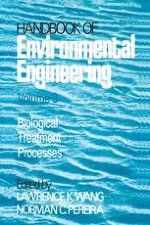1986 | OriginalPaper | Buchkapitel
Treatment by Application onto Land
verfasst von : Donald B. Aulenbach, Nicholas L. Clesceri
Erschienen in: Biological Treatment Processes
Verlag: Humana Press
Enthalten in: Professional Book Archive
Aktivieren Sie unsere intelligente Suche, um passende Fachinhalte oder Patente zu finden.
Wählen Sie Textabschnitte aus um mit Künstlicher Intelligenz passenden Patente zu finden. powered by
Markieren Sie Textabschnitte, um KI-gestützt weitere passende Inhalte zu finden. powered by
This chapter considers the use of various land application techniques as means for treatment and disposal of wastewater. Considerations include the disposal of the water, removal of pollutants in the wastewater, the impact upon the soil through which the liquid is passed, and potential groundwater contamination. Means discussed for the disposal of wastewater include (a) surface spreading or overland flow, (b) slow rate or crop irrigation, and (c) rapid infiltration-percolation. There are variations of these techniques, but in general they can be considered in terms of these three mechanisms. Application in wetlands and subsurface disposal are not considered here. The advantages and disadvantages of applying the liquid onto ground that has a plant cover as opposed to application onto bare ground are considered. No one method is recommended over and above all the others, since certain methods may be more adapted to a specific situation than others. All factors, including economics, must be considered before a final decision is made to use any method of land application of wastewaters.
